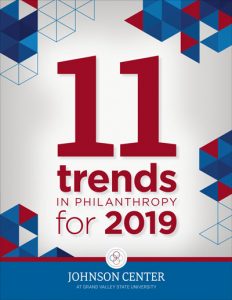Powering Communities While Protecting Individuals


 Communities working toward equitable change are increasingly turning to data to help them understand and solve their biggest challenges. Nonprofit organizations and public entities are using information about residents — including race, sex, age, employment status, income, health, and even the latitude and longitude of residences — to illuminate persistent inequities and develop strategies to eliminate them.
Communities working toward equitable change are increasingly turning to data to help them understand and solve their biggest challenges. Nonprofit organizations and public entities are using information about residents — including race, sex, age, employment status, income, health, and even the latitude and longitude of residences — to illuminate persistent inequities and develop strategies to eliminate them.
Detailed data, broken down by characteristics like race and gender, are powerful for uncovering the stark inequalities that might otherwise be hidden by total population averages. Such disparities are often even more apparent when data are mapped to show outcomes in particular neighborhoods.
“Detailed data, broken down by characteristics like race and gender, are powerful for uncovering the stark inequalities that might otherwise be hidden by total population averages.”
Collective impact and community data organizations, like those belonging to the Collective Impact Forum and the National Neighborhood Indicators Partnership, are well aware of these truths. In West Michigan, for instance, headlines celebrating a growing population and vibrant economy often give the false sense that prosperity is experienced equally by all residents. Data published online by KConnect (2018), a local collective impact organization, and from the Johnson Center’s VoiceKent and Community Profiles research tools (2018), demonstrate that disparities in education, employment, income, access to nutrition, health care, and even feelings of safety and belonging, among other resources, are profound in the region.
As the available data become increasingly granular, however, even data that do not include identifiers like name and address can identify individuals indirectly through combinations of demographic and geographic variables. In relatively homogeneous areas, it would not be difficult with just a few data points to identify a Jewish resident living in a majority Christian area, for instance, or an African American resident in a predominantly white neighborhood.
To be clear, this should not discourage the use of granular data. Granular data is critical for elevating the experiences and voices of groups that have historically been disenfranchised and excluded from development plans. Making such data broadly accessible ultimately empowers communities, providing the information they need to approach systems-level change strategically.
However, this trend of making increasingly granular data publicly available for community use simultaneously raises important questions about individuals’ rights to privacy and the security measures and other steps taken to protect individuals’ information.
As community data initiatives become increasingly sophisticated in their use of granular data and endeavor to generate knowledge that can be used by other communities, they will have both legal and ethical obligations to safeguard the identities of individuals whose data they use. Individual educational and health-related records, for instance, are protected by FERPA and HIPPA legislation, which include heightened standards for data privacy and security. Practically, this has implications for the technological systems of those handling the data and their methods of data transmission and storage. While maintaining secure data systems and the technology staff to support them might be cost-prohibitive for the nonprofit organizations that most often lead community data initiatives, university and/or health system partners can play an integral role in these initiatives by providing the technological infrastructure required to utilize individuals’ data securely.
Depending upon whether the data efforts meet the federal definition of research, community data initiatives may also be subject to oversight by an Institutional Review Board (IRB) — an independent body tasked with ensuring ethical research practices that protect the rights and wellbeing of individuals who participate in or contribute personal data to research efforts (45 CFR 46). Research institutions like medical and academic centers typically have internal IRBs that oversee all internal research. However, research that is conducted outside of a research institution is not exempt from federal requirements. Such research may receive review by partnering with an affiliated researcher, at a university or hospital for example, or by contracting with a commercial IRB for review services.
This is already happening, as community data initiatives often seek out the expertise of researchers who are associated with institutions that have their own legal and research review bodies. As leveraging granular data to inform collective impact continues to grow in popularity, more and more of these initiatives will naturally fall under the purview of IRBs. On one hand, this may create additional challenges in already challenging work, particularly when IRB recommendations run counter to community plans. For example, an IRB might require informed consent procedures for would-be survey participants, which could increase costs and timelines, and seem like an unnecessary step to community partners.
However, IRB involvement should also be viewed as an opportunity. As described above, community data initiatives can benefit significantly from partnership with researchers who are embedded in large institutions because these researchers bring with them valuable resources like advanced technology infrastructure, legal counsel, and research review committees that smaller community organizations might not have access to otherwise.
By working together, research institutions and community organizations can use detailed data in ways that inform the equitable systems change that historically disenfranchised community members deserve, and at the same time ensure that these individuals are not further marginalized in the name of data. Only by balancing the imperatives of community empowerment with protections for individual rights and privacy can true systems change occur.

KConnect. (2018). Data dashboard. Retrieved from http://k-connect.org/data
Dorothy A. Johnson Center for Philanthropy. (2018). Community research & data tools. Retrieved from https://johnsoncenter.org/services/cdrl
U.S. Department of Health & Human Services. (2018). Office for Human Research Protections, 45 CFR 46. Retrieved from https://www.hhs.gov/ohrp/regulations-and-policy/regulations/45-cfr-46/index.html#46.102